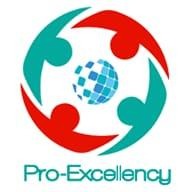proexcellency
Oracle GTM Online Training
Course Content
Product Overview
Introduction to GTM
Features common between GTM and OTM
Jurisdiction Management
Trade Master Data
Overview
Product Classification Codes
Restricted Party List
Restricted Party Exclusion List
Trade Item Management
Registration Management
Custom Info Integration
Product Classification Process
Overview
Adhoc Product Classification Lookup
Service Preference Configuration
Product Classification lookup and assignment within context of Trade Item processing
Product Classification Template
Detect Invalid Product Classification Process
Update Product Classification process
Restricted Party Screening
Overview
Adhoc Restricted Party Screening Overview
Service Preference and Service Parameter Configuration
Overview of Algorithm used in Restricted Party List Screening
Restricted Party Screening for Trade Contact
Compliance Rules
Overview
Control Category, Control Type and Control Code
Compliance Rule Setup
Compliance Algorithm
Compliance Rule Set and Compliance Rule Set Group
Compliance Policy
Adhoc Compliance Rule Screening
Sanctioned Territory Screening
Trade Transaction
Overview
Trade Transaction Line
Trade Transaction Line Linking with Parent Line For Classification Roll up
Trade Transaction creation from Order Release or Shipment in a common OTM/GTM environment
Trade Transaction Screening
Trade Transaction Status Management
Trade Document Management
Oracle GTM:
Online Training Oracle GTM ByProexcellency.
Oracle Global Trade Management (GTM) authorizes companies to optimize, automate, and monitor cross-border transactions from a unified trade and transportation platform.
Oracle Global Trade Management is a unique global compliance solution that allows companies of various size and in all areas to centrally implement their global trade operations.
Oracle GTM cloud can operate independently or as a native component of your transportation management and logistic system.
The improvement of Oracle GTM as a unified aspect of Oracle’s logistics suite, GTM permits corporations to upgrade, motorize, and have a look at cross-border transactions in approaches that had been now no longer to be had earlier than from best-of-breed software program providers.
Using a blended making plans structure, Oracle GTM Cloud affords a worldwide change automation platform with well-based submission guidelines and change automation aid.
GTM enables industries to optimize, automate, and check cross-border transactions in ways that were not before available from best-of-breed software providers.
GTM logistic system enables :
- Country of origin: Classify your goods for import and export under standard regulatory classification regimes, such as the harmonized tariff system, export control lists, and munitions lists. This ensures the correct licenses are applied, documents produced, and duties paid downstream.
- Landed cost simulation : Calculate an estimated landed cost for multiple simulataneous scenarios using the landed cost simulator.
- Trade agreement qualification: Analyze your item structure to determine if a good qualifies for preferential treatment under rules of a trade agreement, potentially saving money on duty and taxes.
- Global trade analytics: GTM cloud’s intelligence capability provides tools to build your own dashboards, track key matrics, and analyze transactions to take action and resolve issues.
- Document management : GTM lets you easily manage document workflow. Archive documents locally or by connecting GTM to your corporate content management system.
- Compliance and license management : To ensure that restricted goods aren’t imported or exported without a license or permit.
- Restricted party screening: perform restricted party and sanction screening on both your party master data and business transactions to ensure you stay compliant with government restrictions.
Supply chain managers constantly deal with change and disruption. Some situations where they would like to determine the impact of a planned change include:
- Adding a customer or supplier to an existing network
- Forecasting the impact of changing volumes to transportation operations
- Determining the best course of action when an unplanned disruption occurs, such as the lossof a key supplier or a port strike
- Changing existing network design or transportation policies to improve operations
Duration
Duration
30-35 hrs
Shipping & Returns
Shipping & Returns
Dimensions
Dimensions
Care Instructions
Care Instructions


